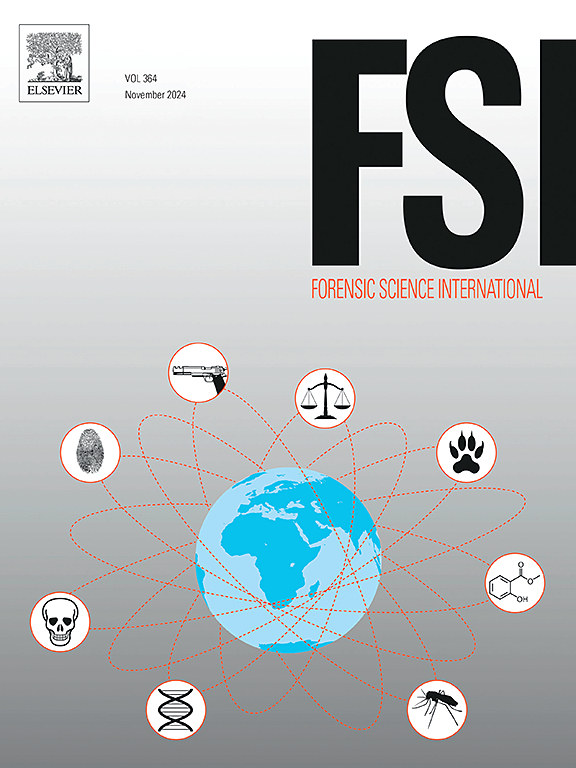Improvement of the Forensic International Dental Database (FIDB) for adult age-at-death estimation using root dentin translucency: A simplified alternative methodology
IF 2.5
3区 医学
Q1 MEDICINE, LEGAL
引用次数: 0
Abstract
Root Dentine Translucency (RDT) has been shown to strongly correlate with adult chronological age. Since the first proposals, several methodological improvements and tests were fulfilled to reduce error and evaluate the performance of the procedure across samples from diverse populations. Recently, a Bayesian calculation model that analyzes both RDT and periodontal retraction (named Forensic International Dental Database; FIDB), was developed to improve the reliability of age estimates, and tested on a global scale. This study aims to evaluate a novel FIDB procedure that introduces a logarithmic transformation into the calculations and utilizes RDT as the sole age predictor. It was conducted on a sample of 142 intact teeth from Peruvian individuals and the lowest errors were observed in the 40–49 and 50–59 years cohorts, with biases ranging from −0.96 to 1.61 years and inaccuracies between 5.73 and 6.16 years. The other cohorts show acceptable margins of error, with biases and inaccuracies remaining below 11 years. The main contribution of this research is the finding that better accuracy can be achieved when age estimation is based solely on RDT measured from intact teeth, excluding periodontal retraction as a relevant estimator. However, these initial trends must be validated on larger, more diverse samples to determine whether this new approach can be confidently applied in worldwide forensic contexts.
改进法医国际牙科数据库(FIDB)的成人死亡年龄估计使用根牙本质半透明:一个简化的替代方法
牙根质透明度(RDT)已被证明与成人实足年龄密切相关。自第一个建议以来,已经完成了几项方法改进和测试,以减少误差并评估来自不同人群样本的程序性能。最近,一个同时分析RDT和牙周回缩的贝叶斯计算模型(命名为Forensic International Dental Database;FIDB)是为了提高年龄估计的可靠性而开发的,并在全球范围内进行了测试。本研究旨在评估一种新的FIDB程序,该程序将对数变换引入计算,并利用RDT作为唯一的年龄预测器。该研究对来自秘鲁人的142颗完整牙齿样本进行了研究,在40-49岁和50-59岁队列中观察到的误差最低,偏差范围为- 0.96至1.61年,不准确性范围为5.73至6.16年。其他队列显示出可接受的误差范围,偏差和不准确性保持在11年以下。本研究的主要贡献是发现当仅基于完整牙齿测量的RDT来估计年龄时,可以获得更好的准确性,而不包括牙周回缩作为相关的估计。然而,这些最初的趋势必须在更大、更多样化的样本上得到验证,以确定这种新方法是否可以自信地应用于全球法医环境。
本文章由计算机程序翻译,如有差异,请以英文原文为准。
求助全文
约1分钟内获得全文
求助全文
来源期刊

Forensic science international
医学-医学:法
CiteScore
5.00
自引率
9.10%
发文量
285
审稿时长
49 days
期刊介绍:
Forensic Science International is the flagship journal in the prestigious Forensic Science International family, publishing the most innovative, cutting-edge, and influential contributions across the forensic sciences. Fields include: forensic pathology and histochemistry, chemistry, biochemistry and toxicology, biology, serology, odontology, psychiatry, anthropology, digital forensics, the physical sciences, firearms, and document examination, as well as investigations of value to public health in its broadest sense, and the important marginal area where science and medicine interact with the law.
The journal publishes:
Case Reports
Commentaries
Letters to the Editor
Original Research Papers (Regular Papers)
Rapid Communications
Review Articles
Technical Notes.
 求助内容:
求助内容: 应助结果提醒方式:
应助结果提醒方式:


